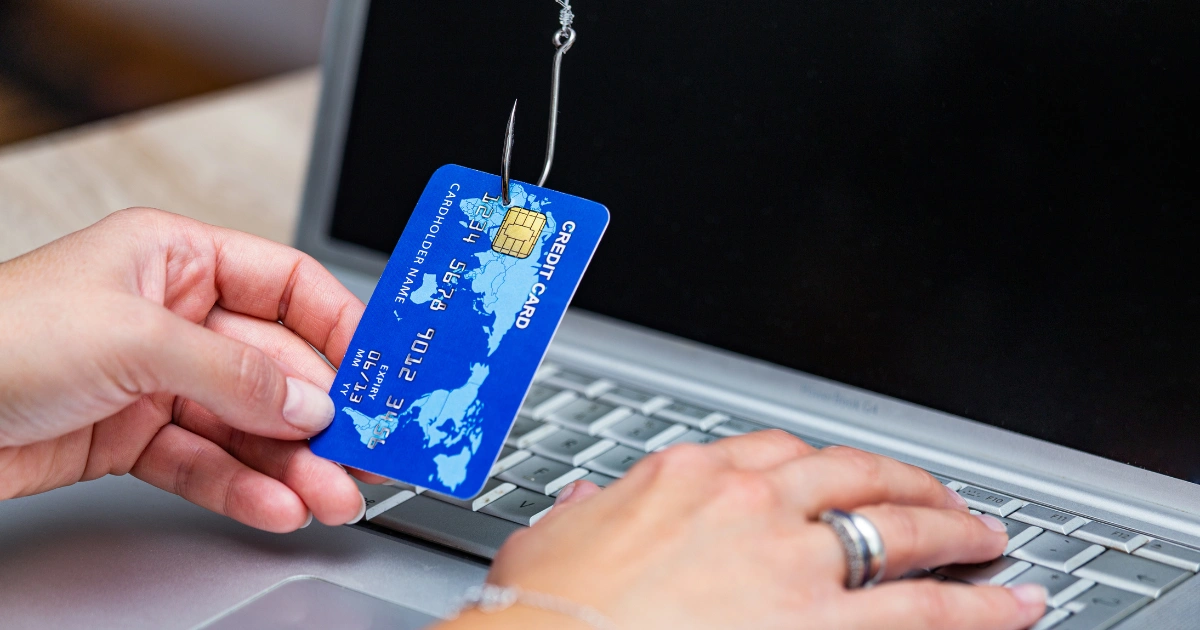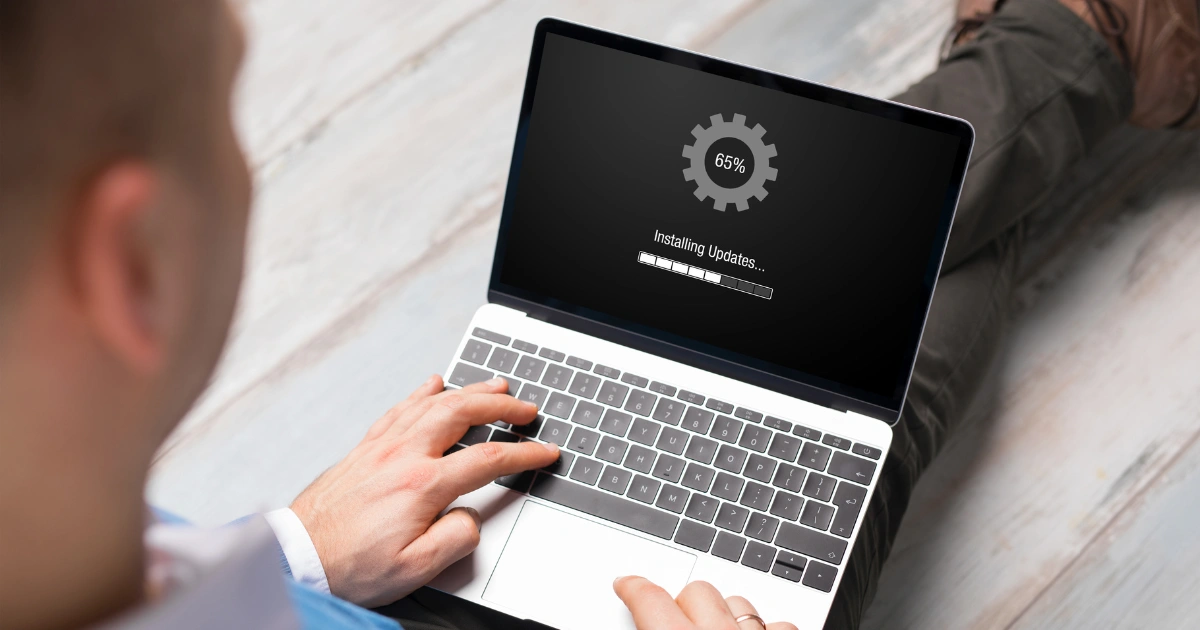6 Cybersecurity Risks of Using Personal Devices for Work
From 2019 to 2021, there was a significant increase in the percentage of individuals working primarily from home in the United States. Data from the 2021 American Community Survey released by the U.S. Census Bureau indicates that the number of remote workers more than tripled, rising from approximately 9 million people to 27.6 million people during this time.
As more organizations embrace remote and hybrid work models, the BYOD (bring your own device) policy phenomenon has taken center stage. In this article, we'll dive into six major cybersecurity risks associated with using personal devices for work and offer practical tips to help you avoid potential pitfalls.
Table of Contents
The Top Cybersecurity Risks of Bring Your Own Device Policies
In this new world of remote and hybrid work, many of us have traded in our office desks for cozy kitchen tables and swapped suits for sweatpants. The convenience of smartphones, tablets, and laptops has revolutionized how we work, allowing us to access emails, systems, and files anytime, anywhere.
While the ability to seamlessly switch between devices is undeniably alluring, BYOD practices can expose businesses to a host of cybersecurity threats, making it essential for IT teams to adopt proactive measures that help keep these risks at bay.
1. Data Leakage
Data leakage occurs when sensitive information, such as company files or personal information, is unintentionally exposed or shared. This risk is particularly high with personal devices as they are often used to access both work and personal accounts, making it easier for data to be accidentally shared, misplaced, or intercepted like in a man-in-the-middle attack.
Employees may also use unsecured or public Wi-Fi networks to access company resources, which can lead to data interception and leakage. Moreover, personal devices often lack the same security measures as corporate-owned devices, like data encryption, secure boot, or VPN access.
How to Prevent Data Leakage
Data leakage occurs when sensitive information is inadvertently or intentionally disclosed to unauthorized individuals. Here are some effective strategies companies can implement to mitigate this risk:
Mobile Device Management (MDM) Systems
- Centralized control: MDM systems allow organizations to manage and monitor employee devices remotely, ensuring compliance with security policies.
- Remote wipe: If a device is lost or stolen, MDM can remotely erase sensitive data to prevent unauthorized access.
- App management: Organizations can restrict the installation of potentially harmful apps and enforce app usage policies.
Strong Security Protocols
- Data encryption: Encrypting data both at rest and in transit ensures that even if it's intercepted, it remains inaccessible.
- Regular software updates: Keeping operating systems and applications up-to-date patches vulnerabilities that could be exploited by attackers.
- Access controls: Implement granular access controls to limit user permissions based on their roles and responsibilities.
Employee Training and Awareness
- Security training: Educate employees about common data leakage threats, best practices for handling sensitive information, and the consequences of data breaches.
- Phishing awareness: Train employees to recognize and avoid phishing attempts that can trick them into disclosing sensitive data.
- Social engineering prevention: Teach employees how to identify and resist social engineering tactics used to manipulate them into sharing confidential information.
Clear Usage Guidelines
- Acceptable use policies: Develop clear policies that outline acceptable device usage, including guidelines for handling sensitive data and personal devices in the workplace.
- Data classification: Implement a data classification system to identify and categorize sensitive information based on its value and risk.
- Data retention policies: Establish guidelines for data retention and disposal to minimize the risk of unauthorized access to outdated or unnecessary information.
By combining these strategies, companies can significantly reduce the risk of data leakage and protect their valuable information.
2. Malware Infection
Malware infections pose another significant cybersecurity risk for organizations that allow employees to use personal devices for work.
Personal devices are more likely to be infected with malware, as users may not adhere to the same security standards they would when using a company-owned device. They might download apps from untrusted sources or visit unsafe websites, potentially exposing their devices to malware infections.
Once a personal device is infected, the malware can easily spread to the corporate network when the user connects their device to it. Malware can also spread through the organization's cloud services, email, or file-sharing platforms.
How to Prevent Malware Infection
To mitigate malware infection concerns, companies should:
- Utilize up-to-date antivirus software: Ensure that all devices have the latest antivirus protection to detect and remove malicious threats.
- Conduct regular security scans: Perform frequent scans of devices to identify and address potential vulnerabilities.
- Educate employees: Train employees on safe browsing practices, such as avoiding suspicious websites and clicking on unknown links.
- Promote secure connections: Encourage employees to use secure connections (HTTPS) when accessing sensitive information online.
3. Insufficient Security Controls
Personal devices often lack the security controls and monitoring capabilities found on corporate-owned devices. Companies may find it challenging to enforce security policies or remotely manage these devices, leading to weaker overall security. For example, a personal device may not have the latest security patches installed, leaving it vulnerable to known exploits.
Additionally, employees may not have the same awareness regarding cybersecurity practices on their personal devices as they do on their work devices. This can result in weak or reused passwords, lack of two-factor authentication, or failure to lock devices when not in use, all of which can lead to unauthorized access.
How to Improve Security Controls
Companies can bolster their security posture by implementing stringent access controls. Multi-factor authentication, which requires users to provide multiple forms of identification, adds a significant layer of protection against unauthorized access. Role-based permissions ensure that individuals only have access to the data and systems necessary for their job functions, minimizing the risk of accidental or malicious data breaches.
Regular auditing and updating of security measures are essential to maintain a robust security framework. Security assessments can identify vulnerabilities and outdated practices, allowing organizations to take proactive steps to address them. Additionally, staying current with the latest security best practices and technologies is crucial to protect against emerging threats.
A simple yet effective way to mitigate security risks is by utilizing password management solutions. These tools allow employees to create and store strong, unique passwords for various accounts, making it difficult for unauthorized individuals to gain access. Password managers can also enforce password policies, such as requiring a combination of uppercase and lowercase letters, numbers, and special characters.
4. Phishing Attacks
Phishing attacks remain a top cybersecurity risk for organizations, and using personal devices for work can exacerbate this threat. Employees may be more susceptible to phishing attacks on their personal devices, as they may not be as vigilant about scrutinizing emails or messages from unknown sources.
Moreover, employees may use the same email address for work and personal purposes, increasing the risk of successful phishing attempts. Attackers can exploit personal information, such as interests or social media activity, to create highly targeted and convincing phishing emails.
How to Prevent Phishing Attacks
To prevent potential phishing attacks, companies should provide ongoing cybersecurity training emphasizing phishing awareness and teach employees to recognize and report suspicious emails. Implementing email filtering technologies and advanced threat protection can also help detect and block phishing attempts before they reach users' inboxes.
5. Unauthorized Access to Sensitive Information
When personal devices are used for work, there is an increased risk of unauthorized access to sensitive corporate data. This can occur if the device is lost, stolen, or left unattended, allowing unauthorized individuals to access the device.
Personal devices often lack the advanced security features of corporate-owned devices, such as encryption, strong passwords, and multi-factor authentication. Without these additional security measures in place, it becomes easier for cybercriminals to access the device and the sensitive information stored on it. Furthermore, personal devices are more likely to be shared among family members or friends, increasing the risk of unintentional access to confidential data.
How to Prevent Access to Sensitive Information
Companies can prevent unauthorized access to sensitive information due to BYOD by implementing strict access controls, such as multi-factor authentication, role-based permissions, and secure VPN connections. Furthermore, using machine learning-powered tools to log user activity and monitor and analyze user behavior can help detect potential security breaches, such as unauthorized access attempts or unusual login patterns.
Although machine learning is mostly used in business to improve performance and analytics, manage risks, assess market opportunities, and reduce operating costs, its use in cybersecurity is growing. In fact, 47% of IT companies reported increasing their machine learning budgets by up to 25% in 2020.
6. Inconsistent Software Updates and Patches
Personal devices typically have inconsistent software updates and patches, leaving them vulnerable to cybersecurity threats. Users may neglect to update their devices or applications regularly, as they are not managed by an IT department that enforces timely updates.
Outdated software and apps may contain exploitable security vulnerabilities, which can expose an organization's network and data to potential attacks, as a compromised personal device can serve as an entry point for attackers to infiltrate the company's systems.
How to Keep Software Update-to-date
Companies can maintain consistent software updates and patches in BYOD environments by enforcing a policy requiring employees to regularly update their devices' operating systems and applications. On top of this, incorporating mobile device management (MDM) solutions can help monitor, manage, and enforce software updates across all personal devices accessing the corporate network.
Find the Right Cybersecurity Solution for Your Organization
Using personal devices for work comes with several cybersecurity risks that companies must address proactively. While organizations can take steps to mitigate these risks, one crucial aspect that they cannot overlook is the effective management of passwords. A secure and efficient way to manage passwords is using a password manager like TeamPassword.
TeamPassword provides an encrypted platform that enables users to store strong, unique passwords for every account. This level of security ensures the protection of sensitive data and helps prevent unauthorized access to personal and work-related accounts.
As an individual, it's essential to understand the importance of password security and how it impacts the safety of your personal and work-related data. By using a trusted password manager like TeamPassword, you can confidently navigate the digital landscape without compromising your organization's overall security.


